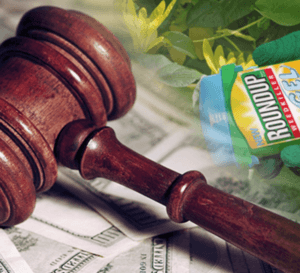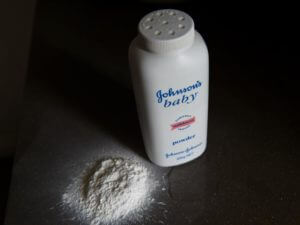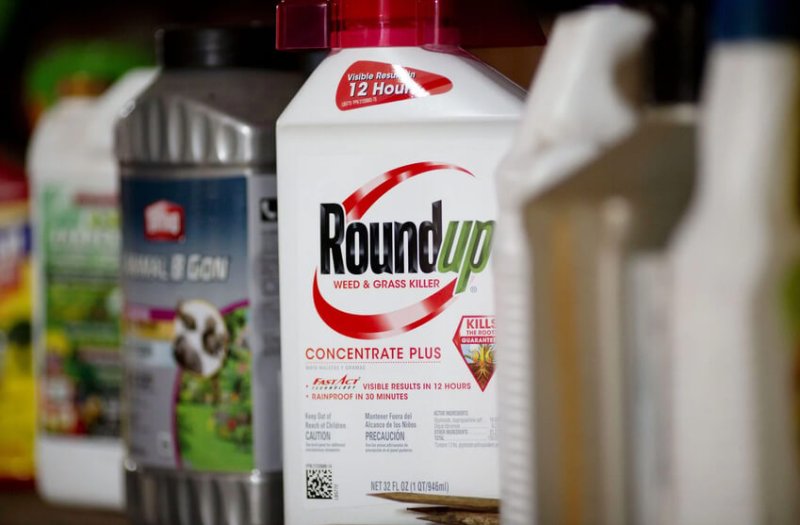[This is an annex to SlimeGate Chapter 2, Section 3. This section tried to understand why lawyers take so much and the victims receive so little of tort lawsuit jury pay-outs. The new litigation finance companies are generating a lot of freely available capital but also diverting a large part of potential support for victims to third-party investors. This money is now pouring into a limited scope of lawsuits (with over 30,000 ongoing cases in the US against talc and glyphosate companies). The more I look at this new, unregulated financial tool, and the unprotected risk it is building on, the more convinced I am that this has become a Ponzi scheme.]
These funds often earn a fixed rate of return per year with an added bonus on settlement. As cases often go to appeal, these costs can mount over years, often more than a decade. Other lending tools only pay back investors if there are settlements, but in many mass tort portfolios, this is becoming less common. The most recent finance innovation allows for individuals to crowdfund groups of cases, particularly taking a chunk out of smaller claims.
This was known historically as “champerty” in British common law (the feudal lord’s share) and was, until recently, considered illegal.
Assuming a 20% annual return (modest if compared to what Burford or IMF Bentham have been reporting), if I invest one million dollars in a typical litigation finance vehicle for a particular group of tort cases, I would earn 200K per year. Assuming no drawn-out appeals, I would get my original investment back after settlement (hopefully with a bonus after anticipated “winnings”). It is not uncommon for a large tort law firm to run up costs of $100 million for a case (private jets don’t come cheap) so that would imply an extra $100 million needed to pay off the investors over a five-year trial period (regardless the outcome).
Pouring greed on an ethical fire
Now the sweetest part of litigation finance is that these transactions can be conducted in secret. Attempts to have the funders and investors revealed in discovery (disclosure) have been rejected. So the people ultimately investing in mass tort lawsuits or portfolios enjoy complete anonymity. They could be competitors happy to see their rivals’ products go through messy, endless reputation-killing litigations. They could even be judges hearing the cases (in the UK a retired judge was running an offshore litigation fund with other lawyers). In the case of the now jailed New York State Assembly speaker, Sheldon Silver, they could be corrupt politicians trying to launder funds (five million USD) paid to them by the very same Predatorts, Weitz & Luxenberg, managing the litigation finance fund.
Without transparency, there is no proper auditing or regulation to protect the parties involved (just the attraction of high returns). Five years ago the suspicious dealings of an offshore litigation fund, Argentum Capital, was called into question. The “scheme involves a maze of unregulated, unaudited, unlicensed firms in multiple jurisdictions and is structured to avoid scrutiny” but since it was designed by lawyers, no one was convicted. Argentum Capital is listed on the Channel Island exchange, but owned by a company in the Cayman Islands and managed by a third company out of Hong Kong.
At its base, the conflict of interest of some funds just reeks of corruption. Take Counsel Financial (motto: “flexible law firm lending”) founded by Perry Weitz and Arthur Luxenberg to serve the firm … Weitz & Luxenberg. How is that firm’s money being managed? You’ll have to ask … that’s right … Perry Weitz and Arthur Luxenberg. As they flexibly pump more liquidity into a limited litigious space filled with opportunists, what could possibly go wrong?

Here is one thing. Weitz & Luxenberg is heavily invested in cases against Bayer on glyphosate. If their fund, Counsel Financial, lends freely and heavily to the strip-mall tort offices to join in the glyphosate stampede, these little firms will pick up the less attractive prospects and add them to the mountain of lawsuits adding to their strategy to overwhelm and persuade Bayer to seek a global out-of-court settlement. If Bayer holds firm, these cases will likely lose and the small tort firms will go out of business reducing competition for Weitz & Luxenberg while adding potential employees. If this isn’t a conflict of interest, I don’t know what is.
Giving a notoriously unethical, greedy class of lawyers free money with no scrutiny and no disclosure may, prima facie, not seem like a smart idea. And as the stories of Predatorts behaving badly while splashing the cash start coming in, some are beginning to call for ethics rules … no kidding.
Bad evidence? Bad investment!
As litigation finance has become the norm, the result has been an explosion of funding increasing capacity for small firms to increase portfolios without proper due diligence. Many litigation finance funds encourage portfolio expansion (taking on many more clients in mass tort lawsuits). As more money is searching for larger returns, tort law firms are investing this capital into late-night TV victim trawling and taking on thousands of plaintiffs in place of dozens. Two cancer issues: glyphosate and talcum powder now account for over 30,000 cases in the United States. This is an unprecedented (and untested) distribution of capital stretching the capacity of a rather small number of law firms.
But what would happen if a large number of tort cases based on bad evidence were all to fail? If a litigation finance organization pumps $100 million into a portfolio, it can expect, prior to settlements, $100 million more in interest annualized over five years. Hopefully they would have advice from risk managers who would tell them to spread their coverage over a wide range of tort portfolios and hedge their bets. But some firms are letting greed and obsession get the best of them and are jumping into certain classes of cases with everything they’ve got.
Take the 15,000+ lawsuits against J&J at the moment attempting to connect certain cases of ovarian cancer to their talc products. Some of the settlements were quite astonishing (including a class action $4.7 billion settlement) with celebrity lawyers marketing themselves and their firms as “magicians.” But all of these cases until now are being appealed or have been overturned on appeal where the jurisdictions have moved away from the “hanging judge” counties (see the earlier SlimeGate presentation of “judicial hellholes”) and focused on the evidence. The science behind this Predatort free-for-all is based on a rather poorly conducted IARC monograph on talc (with many scientific tort-torts from that panel serving as unconvincing expert witnesses). A talc case was recently thrown out after 30 minutes of jury deliberation (and Predatorts usually start with their strongest cases).

So the only thing these law firms can do, after repeated losses on appeal that can run up compounding litigation finance debts over decades, is continue to drink from the well of easy money (as it gets more expensive). Make no mistake, the lawyers are getting paid and continue to pay everyone else involved in the process (except the plaintiffs they pretend to represent) but their firms are needing to get more creative to keep the investors at the trough. If $100 million in litigation finance requires $300 million to cover five years of expenses (compounded with no return), the next five years will require $850 million to finance (assuming they do not have to pay higher rates as capital risks increase).
Which litigation finance firms are most exposed to this house of cards? Without disclosure or transparency, nobody knows.
As long as law firms keep paying investors 20% per annum, the first funds or individuals will do very well (and the law firms, tort-tort scientists, NGOs will all continue to enjoy the good life). But what if, after ten years, J&J win most of their cases on appeal? This Ponzi scheme will collapse. The last investors will get nothing and the law firms … well … I’m sure they’ll have worked in some exculpatory clause to keep them out of prison.
What about the victims?
The victims (plaintiffs), or their families, get nothing. But SlimeGate has shown us that it has never been about the victims. They have just been useful, unwitting tools for media interest and court-room theatrics.
Sickening.
The fatal “slimeball assumption”
The US tort industry contains some of the slimiest low-lifes to have ever walked on two legs. Attempts to reform the tort process in America have failed due to how these wretched Predatorts gamed the system. The richer these scoundrels have become, the more offensive and unethical their actions, and the more untouchable they believe themselves to be.
With some scientists and NGOs as their patsies, they have affected public policy by strangling companies to the point of bankruptcy with no concern regarding the destruction of public trust in institutions, cost to consumers or to society from lost innovations and increased prices. Recently one of J&J’s talc suppliers, Imerys Talc America, filed for bankruptcy citing how they can no longer afford the litigation costs. Good people have lost their jobs. These Predatorts have enriched themselves via manipulation and lies while others have been forced to pay.

But there is a fatal flaw in their game-plan. Due to the easy liquidity from litigation finance funds, the number of cases being managed for glyphosate and talc is reaching unprecedented levels (over 30,000 cases combined) and the cost of managing these prospective plaintiffs is rising. Most of these cases should not have been taken if the firms had been sticking to their own budgets. The tort law firms are banking on the overwhelmed defendants settling out of court (and assume that the large majority of these cases will never face trial). This indeed is their prayer since, as we assume they are leading with their strongest cases, most of them have little chance of success. The Predatorts are using what I call the “slimeball assumption”: if you look at situations and only think of money, you assume everybody else only thinks of money.
But both Bayer and J&J have built their businesses (each over more than a century) on respect for science and innovation. They are ethics-driven companies which produce products that save lives and promote a better world – integrity is core to their corporate cultures. They know that the science on talc and glyphosate are on their side and if they remain true to their founders’ convictions, will stand up and defend the science. The Predatort legal strategy, based on name-calling, outrage and public fear, will not hold up in the appeal processes and as the number of cases start getting rejected at faster rates, their costs and promised litigation finance returns will start to spiral out of control. I for one am praying that principles and science win out over crass slimeball greed.
With the easy money from litigation finance, these Predatorts have leveraged themselves to the gills. If they suddenly can’t pay for their party, they’ll go out of business. Except for the advertising community and a few bent scientists and activists, no one will miss them.
I implore the CEOs of Bayer and J&J, Werner Baumann and Alex Gorsky, to not give in to these lying charlatans. The Predatort house of cards has been stacked on a shaky foundation which cannot survive a sustained period of trials. I understand that shareholders are getting worried but the science is clearly on the side of these companies and the appeals process should highlight that. Smart litigation finance investors will not wait for these cards to all tumble down.
These Predatorts have used litigation finance schemes to create a Ponzi scheme on the bet that Bayer and J&J will blink. I for one wouldn’t invest in that.
David Zaruk has been an EU risk and science communications specialist since 2000, active in EU policy events from REACH and SCALE to the Pesticides Directive, from Science in Society questions to the use of the Precautionary Principle. Follow him on Twitter @zaruk
This piece originally ran at the Risk Monger as SlimeGate 2/7: Predatorts 3.1/4: Is Litigation Finance a Ponzi Scheme? and has been republished here with permission.































